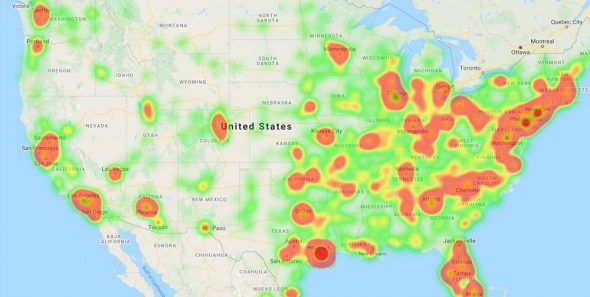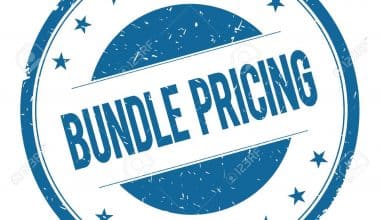We can confidently say paper maps are a thing of the past. Today’s technology shows great potential for sales reps to optimize territories and surrounding business processes to increase sales, with several options tailored to be more affordable for small businesses.
Unfortunately, there are many choices available, leaving the bigger question to be which software your small business should leverage rather than if a tool is needed.
#1. Maptive
The Maptive software continues to be a top contender in mapping tools. Many derive their value from the platform’s robust feature set, including built-in route optimization, a filtration tool, and the “average sale” filter, allowing sales teams to target quality leads.
Maptive also allows users to build efficient sales routes with unlimited stops in minutes. All users have to do is upload their location-based data to their 256-bit SSL encrypted software to receive a fully customizable and user-friendly map.
Maptive is the best overall sales mapping software, with a full feature set focused on intuitive route and territory design optimization, deep customization, and complete territory insights—including heat maps and demographics.
#2. BatchGeo
BatchGeo is the most straightforward approach to plotting a list of addresses on a map. BatchGeo has hosted millions of maps for Fortune 500 companies, non-profit organizations, and individuals since 2006. Teams store most geographic data in a spreadsheet, list, or simple table, which is why BatchGeo was created (ex: Excel, CSV, Google Spreadsheets, etc.) As a result, it’s designed for those formats, making it very simple to drag and drop tabular data into a map.
However, the real fun occurs once the software maps your data. Upon clicking the button, your data points are shown on a simple Google Map for you to view. Data can then be color-coded or heat mapped based on groups or ranges. BatchGeo can also provide you with optimum routes if you’re interested in routing.
#3. Badger Maps
Because of its mobile-first strategy, Badger Maps is one of the most popular sales mapping software alternatives. Badger Maps is a full-featured tool for mobile sales reps that includes a live territory map with real-time traffic updates, streamlined admin responsibilities, and an automated check-in option to keep management informed.
While Badger Maps excels at route optimization, its features are not perfect, with some users complaining that it’s too sophisticated and difficult to use while others wish for more. While it’s wonderful for field salesmen, it’s missing crucial elements, such as fully data-driven sales analytics, a big-picture outlook, customization, etc.
#4. Mapline
Mapline is a simple, entry-level mapping tool for enterprises who wish to check out a software solution but don’t need extensive features. Therefore, Mapline has also found utility for non-sales applications because of its one-size-fits-all design. Designers created Mapline to operate with Microsoft Excel, making it a simple integration for businesses that use the Microsoft Office Suite.
However, if you want to extract critical insights, you’ll have to export the data yourself and figure out how to display your findings. Its design prioritizes functionality above adoption, making it simple to set up but difficult to achieve the fundamental results that competing sales mapping tools can deliver.
#5. Google Maps
Google Maps is easily the “lowest-barrier-of-entry route planner” thanks to its ease of use, free access, Street View, and rich API. It’s no surprise that sales mapping software solutions like Maptive and eSpatial rely on Google Maps.
But bear in mind that, without the features found in more complete services, Google Maps is best for short routes, startups, and teams who haven’t yet reached the point where personalization will offer them a competitive edge. Google Maps, for example, only allows you to route ten stops (25 with some coding) and doesn’t give much in the way of route optimization on its own.
6. Geopointe
Geopointe is a sales data mapping solution built specifically for Salesforce. Geopointe location enables the Salesforce CRM, allowing users to analyze, edit, and visualize their customer accounts. It’s available on the Salesforce AppExchange.
Prices start at $55 per person. Unfortunately, beyond viewing basic sales data, many additional capabilities are only available as add-ons, making the price significantly more expensive than an initial glance. While Geopointe isn’t ideal for most sales teams, it’s ideal for those who utilize Salesforce, are cost-conscious, and like to pick and choose their features rather than getting everything out of the box.
7. eSpatial
Deep customization, large data sets (including Census demographic data), territory optimization, and Google Maps connection make up some of the features available in eSpatial’s sales mapping software. In many aspects, eSpatial and Maptive are similar in terms of characteristics.
The main difference between this mapping tool and others is that while this solution is compatible with almost every spreadsheet and CRM software, eSpatial only works with Salesforce. It is costly—$1,295 per year for a single user and $2,995 for teams (up to five users).
Related Articles
- Chain Of Title: A Comprehensive Guide, Updated!!!
- Buyer’s Journey: Meaning, Stages & How to Implement in Sales Process
- Stakeholder Mapping: Guide to the Mapping Tool for Effective Stakeholder Management
- Raising Capital: 7 Ways to Raise Capital For a Startup
- Project Scope Management: Definition & Scope Management Plan Examples






